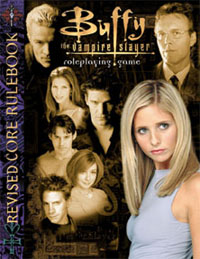One potential mode of “old school” play is the idea that “everybody starts at 1st level”. Combined with each class having a separate experience chart table, individual experience awards, and open gaming tables it was pretty typical for adventuring parties to have a pretty wide variance in their levels. This, of course, isn’t “balanced“, so it’s come in for a good deal of scorn in the past couple of decades. Most groups today allow new characters to be rolled up using the party’s current level and keep everybody in lock-step through unified XP awards.
(My Ptolus group, however, has experienced a 1-3 level variance due to a variety of reasons. I have not found this be inherently traumatizing.)
Having played a megadungeon OD&D campaign for awhile now, however, I’ve found that there are a few mitigating factors in practice:
First, the open gaming table combined with super simple character creation results in everybody running a “stable” of characters. They can self-select whichever character is the best match for the current group or roll up an entirely new character depending on whatever is most appropriate.
Second, due to the lethality faced by 1st-level characters, players rolling up new characters want a couple higher level characters to accompany them. It greatly increases the odds of survival and the pace of advancement.
Third, it doesn’t actually take that long to “catch up”. For example, in the time it takes a 5th level fighter to reach 6th level, a 1st level fighter will reach 5th level. (And will catch up and become 6th level before the more experienced fighter reaches 7th.)
With all that being said, I’ve been giving some thought on how you can make the level gap more palatable.
 In Eden Studio’s Buffy the Vampire Slayer roleplaying game, they compensate for the power difference between the Slayer and the Scooby Gang by giving the weaker characters additional drama points. Could this be adapted? Let’s say lower level characters get +1 inspiration points per difference in level? (So a 3rd level character adventuring with 6th level characters would get 3 inspiration points to spend per session.)
In Eden Studio’s Buffy the Vampire Slayer roleplaying game, they compensate for the power difference between the Slayer and the Scooby Gang by giving the weaker characters additional drama points. Could this be adapted? Let’s say lower level characters get +1 inspiration points per difference in level? (So a 3rd level character adventuring with 6th level characters would get 3 inspiration points to spend per session.)
Inspiration points are a dissociated mechanic, obviously, but they could represent all sorts of things: It’s the guy who’s inspired to greater heights by Superman’s example. Or picks up a few tricks from sparring with D’Artagnan. Or gets an assist from Bruce Lee during the melee. But, basically, you’re rubbing shoulders with some elite dudes and some of it is wearing off.
Mechanically, we could simply use the existing action point mechanics for 3rd Edition. Alternatively we could continue taking our page from Buffy and allow for an inspiration point to be spent much more significantly:
- I Think I’m Okay: Restores half your lost hit points.
- Righteous Fury / Time to Shine: +5 to all actions for the current combat.
- Dramatic Editing: Actually alter the game world. (“Hey! There’s a secret door over here that leads us to the back of the goblin encampment!” “Good thing somebody dropped some holy water over here!”)
- Back From the Dead: Return from the grave through resurrection, a clone duplicate, a long-lost twin, or whatever else strikes their fancy.
Some of these look like they would exceed my “tolerance threshold” for D&D. Others wouldn’t. Your mileage will almost certainly vary.











